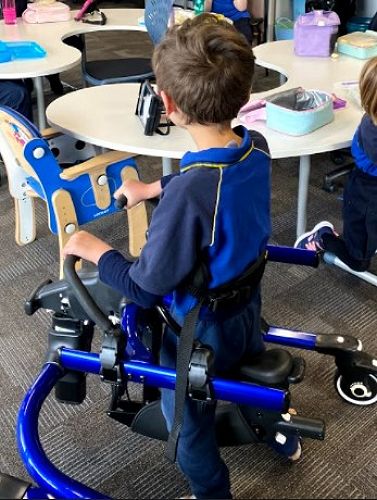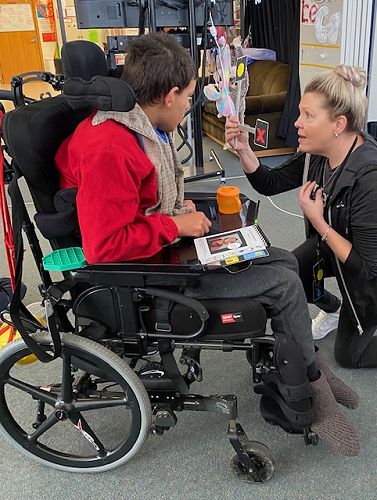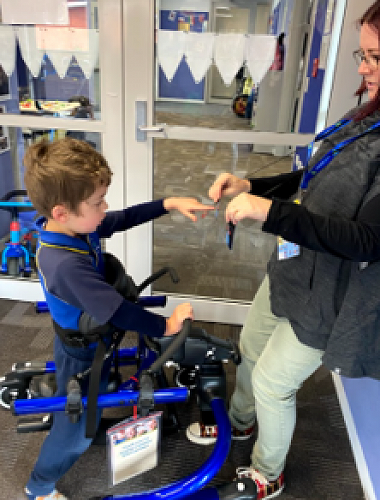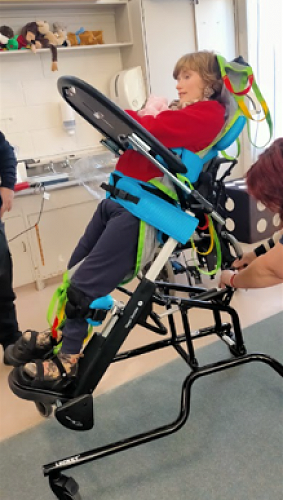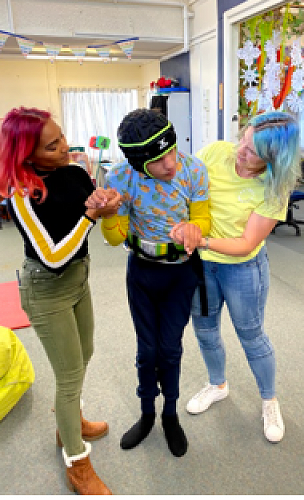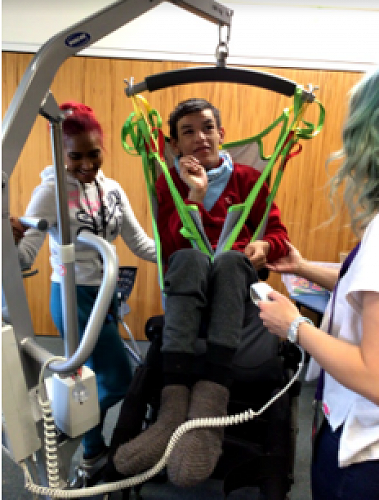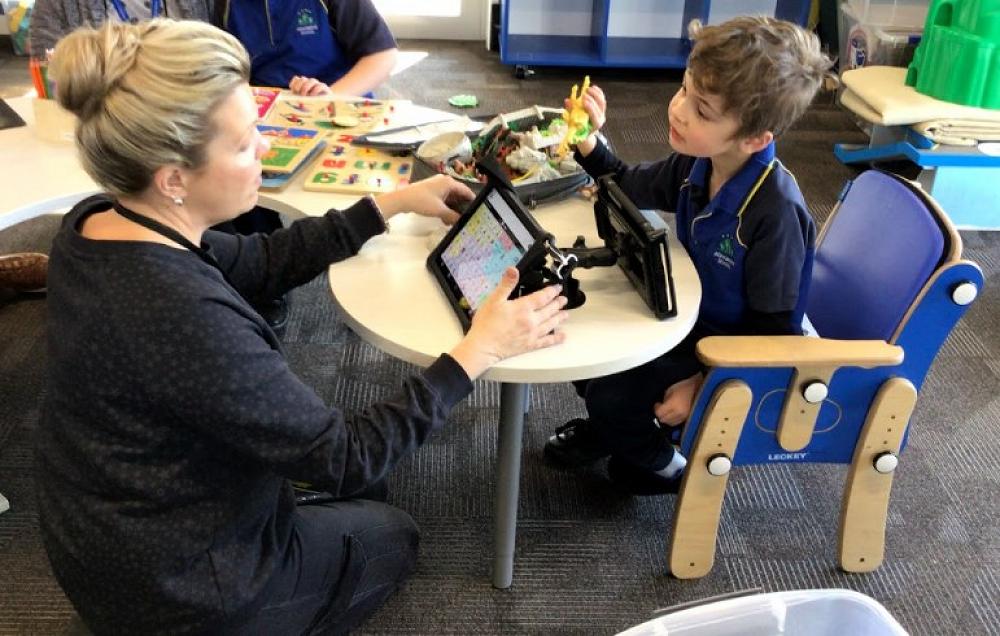
Learning to Move, Moving to Learn!
The Allenvale specialist team supports healthy movement and access to learning through the use of specialised equipment, approaches and programmes.
Research shows that moving our bodies engages our brains. This is why we see leaps in all areas of development when young children meet their physical milestones (sitting, pulling to stand and independent mobility). Our students with more complex bodies may need equipment to support them to achieve these postures and movements needed for learning. Providing our students with access to the best and most up to date equipment to meet their needs is an important part of the specialist team’s role at Allenvale.
The Role of Our Specialist Team:
Specialised equipment in a school includes standing frames, walking frames, wheelchairs and specialised seating. An integral part of a specialist’s role in our setting is to ensure access to essential equipment for optimal positioning. Establishing a stable base in sitting, and encouraging a more active body and mind, can help students in all areas of learning, including communication.
Our Occupational Therapist (OT) and Physiotherapist (PT) can assess, trial and apply for funding of equipment for walking, sitting, standing and wheeled mobility to assure the best health and learning outcomes for our students. Child Development Service (CDS) may also prescribe this equipment for use at home in some instances. Many families agree that with limited time/space available at home to use the equipment, we can achieve more effective outcomes through using and keeping this equipment at school during the school term.
Specialist school SLTs support students to become intentional, active, autonomous communicators. For many of our students, this means using communication assistive technologies. It is vital that the SLT work closely with OT, PT, teaching staff and families when establishing recognisable, repeatable movement patterns for communication for our students with complex challenges. We need to ensure that these movements are healthy and practiced. We are seeing fantastic outcomes working together to establish functional movements for communication including head, eye, hand and other body movements to access communication systems.
The benefits of having the right mobility and positioning equipment and programmes in place:
- Improved wellbeing, alertness and sleep pattern
- Better curriculum access
- Ability to be at eye level with others
- Improved body awareness and feedback
- Stretches muscles, preventing the onset of contractures and asymmetry
- Improved respiration and voice control
- Safer and more effective eating and drinking
- Aids digestion, bowel function and bladder drainage
- Facilitates the formation of the hip joint in early development
- Increased muscle strength and endurance
- Independent movement, important for initiating social engagement
- Access to communication technologies
- Helps maintain skin integrity by relieving pressure encountered during sitting
- Improved circulation and blood pressure
- Improved self-confidence (feelings of greater independence and self-sufficiency, sense of self)
- Improved cardiovascular and pulmonary (heart and lung) fitness
- Increased bone density and reduces the risk of fractures
- More information about the benefits of standing
Featured and pictured are some of our star movers and learners:
Charlotte is learning to weight bear through her feet toward standing and independent mobility. She is also learning to use her eyes accurately for communication access.
Rylee is learning to walk with a healthy gate pattern, gain muscle health, strength and endurance for everyday activities. He is also learning to sit with a stable base, use his arms and hands to access a communication device, play and learn
Matthew is learning to use his eyes strategically to access a communication system, walk with a stable and balanced gate for longer periods of time.
Salih is learning to stand, walk and move around independently. He is also learning to use his eyes and head movements to say “yes” and “no” as a way of moving through vocabulary in his new communication system.
Watch this space for what these students will achieve using their specialised equipment and with the support and guidance of their specialist team!
Gallery
